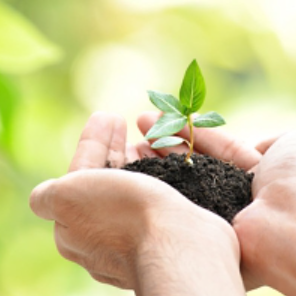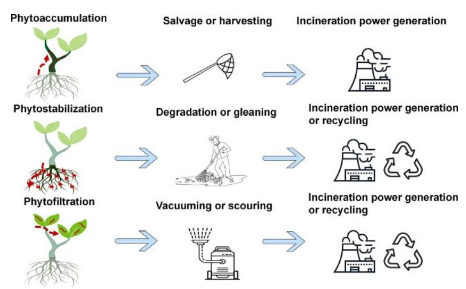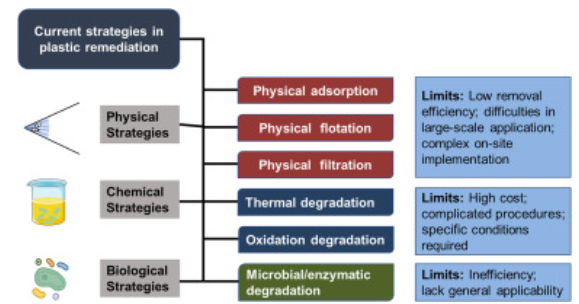
As the personal care industry finds ways of eliminating microplastics to curb pollution, a new ecological article in Eco-Environment & Health with lead author Dr. Yuyi Yang reveals the potential of phytoremediation to “diminish” micro and nanoplastics. The method harnesses natural plant processes to absorb the pollutants.
Intentionally added microplastics, including solid polymers, were banned in Europe last year, with recent innovations offering alternatives for cosmetic products, such as biodegradable polymers from natural sources.
Additionally, the EU Council and Parliament reached a provisional political agreement on revising the urban wastewater treatment directive, which will mandate that cosmetic firms cover micropollutant costs. Micropollutants include phthalates, parabens and UV filters.
In the study from Hubei Key Laboratory of Wetland Evolution & Ecological Restoration, Yang and her team note, “Rivers carry 0.8 million to 2.7 million metric tons of plastic from inland to the ocean every year, which is one of the main contributors to marine pollution. These plastic particles can carry a panoply of chemical and biological pollutants to various compartments, consequently and potentially threatening ecosystem functioning and services.”
SkinConsult is a cosmetic safety testing service provider that also addresses microplastics in cosmetics as an issue. It explains how the particles can be eaten due to their small size while also remaining in the environment for a long time, making them difficult to remove and ending up in drinking water.
With regulatory pressure on the industry to eliminate microplastics from products and clean up micropollutants in water, Yang’s study advocates using plant life as a tool to combat plastic contamination in ecosystems.
The study also explains phytoaccumulation is a method by which plants absorb and accumulate pollutants. Phytoremediation uses plants to capture and degrade pollutants, “providing an environmentally friendly and cost-effective alternative to traditional techniques,” which the researchers think can “revolutionize” environmental management strategies.

The researchers believe it is important to find alternative products for plastics, which can also degrade, but there is also an “urgent need to intercept and recycle plastic debris in the environment.”
Finding the best method
Yang’s study explores mechanisms and technological pathways for phytoremediation as a sustainable solution for pollution across terrestrial, aquatic and atmospheric realms.
The scientists note, “Chemical and biological strategies advocate for the elimination of recycled plastics through thermal degradation, oxidative degradation and microbial degradation. Although many efforts have been made, the existing solutions to alleviate micro/nanoplastic pollution remain incomplete and require future improvement to meet environmental sustainability.”
“Recent research on the interaction between plants and plastics has found that plants can intercept and even absorb fine plastics from the contaminated environment while also exhibiting high tolerance to long-term exposure to micro/nanoplastics at environmental concentrations.”
They evaluated the potential of different types of plants to capture, stabilize and filter micro- and nanoplastics by hyperaccumulator plants exposed to plastic concentrations and saw which ones significantly lowered the concentration.
According to their recommendations, by carefully choosing and placing these plants, toxic plastics can be sequestered and transformed into harmless or beneficial forms, which would represent a significant advancement in environmentally friendly plastic remediation.

Yang states, “Phytoremediation isn’t merely a technique; it’s a sustainable revolution in our battle against plastic pollution. By harnessing plant-based solutions, we are able to lessen the environmental burden of plastics, turning waste into valuable resources and fostering a healthier planet.”
Challenges in using plants
Researchers underscore the significance of the findings in integrating phytoremediation into waste management frameworks for improving efficacy and sustainability. Further, they believe the method “aids in ecosystem recovery, enhancing biodiversity and ecological health.”
The study emphasizes the need for comprehensive strategies that cover plastics prevention, interception and recycling using green technologies and advocates for the expansion of phytoremediation practices.
However, researchers flag that “screening plant species with phytoremediation potential for micro/nanoplastic decontamination and exploring the uptake and immobilization mechanisms are needed.”
“Current methods for extracting and quantifying micro and/or nanoplastics in plants are cumbersome and complex. Developing convenient and efficient methods to analyze micro/nanoplastics quantitatively in plants is of paramount importance in screening hyperaccumulation plants and better understanding the remediation process.”
Article Credit: personalcareinsights